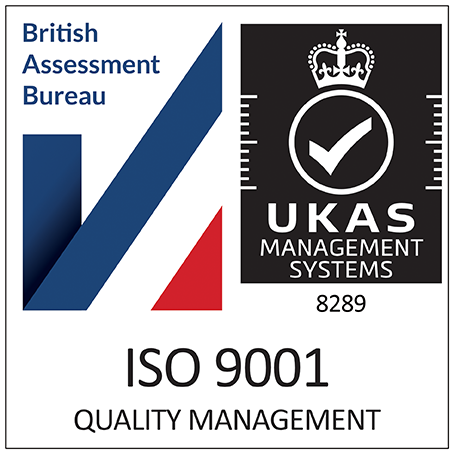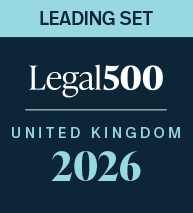Holly Parker
With advances in technology, an increasing number of parties are seeking to rely on covert recordings in family proceedings. On the surface, such recordings may appear to provide helpful evidence of alleged behaviour. However, the courts generally view recordings of these nature in a dim light.
In Re B (A Child) [2017] EWCA Civ 1579, Sir James Munby commented on the “myriad of issues” caused by covert records. He also stated “There was a distinction between open recording and covert recording; the latter being more problematic.” He identified three categories of covert recordings:
(a) of children;
(b) of family members; and
(c) of professionals.
Family Justice Council Guidance
In 2022 the Family Justice Council (‘FJC’) released draft guidance defining covert recordings as “any records made without the express knowledge and permission of the people being recorded whether by video or audio.” The guidance acknowledges that covert recordings can serve both legitimate and illegitimate purposes.
Recordings of children: Often recordings of children give a negative light to those recording. In M v F (Covert Recording of Children) [2016] EWFC 29, a father had sewn recording devices into his children’s clothing and Mr Peter Jackson commented “It is almost always likely to be wrong for a recording device to be placed on a child for the purpose of gathering evidence in family proceedings, whether or not the child is aware of its presence.” The court found the consequences of the father actions were to:
- damage further the relationship between the relevant adults;
- demonstrate the father’s inability to trust professionals;
- create a secret that may well affect the child’s relationship with her father and step-mother when she comes to understand what has happened;
- affect the family’s standing in the community.
Recordings of children may also fall under section (13)(3) of the Children and Families Act 2014 (CAFA), which states:
A person may not without the permission of the court cause a child to be medically or psychiatrically examined or otherwise assessed for the purposes of the provision of expert evidence in children proceedings.
Under section 13(4) of CAFA, if the recording constitutes an examination or assessment of the child, the recording is inadmissible unless the court rules otherwise.
Recording of parent: In some instances, the recording is a form of surveillance which in itself can be an example of obsessive behaviour which can constitute a form of harassment or abusive. Repeatedly recording one parent without their knowledge may be deemed as an invasion of privacy and has been held by the court to be “highly relevant to the welfare determination” as per HKS v HSM [2021] EWHC 3423 (Fam).
Recordings of professionals: There have been numerous reported cases involving covert recordings of professionals. In Medway Council v A & Ors (Learning Disability; Foster Placement) [2015] EWFC B66, the local authority sought to rely on allegations of inappropriate behaviour by the mother towards the foster carer. The mother provided covert recordings of the foster carer being racially abusive towards her, these records proved “pivotal in dismissing the credibility of the foster carer’s allegations”.
However, The British Psychological Society guidance notes: “Deliberate covert
recording is inappropriate and any form of recording should be considered in light of
potential threats to the validity of an assessment. Undertaking such recordings is likely
to undermine the validity of information collected”.
The guidance comments “While it is to be hoped that the recording of an interaction with professionals should not be necessary, there are instances where they have provided probative evidential value.”
What does the legislation say?
Covert recordings are likely to be considered hearsay under section 1(2) of the Civil Evidence Act 1995 (‘CEA’). Section 2(4) of the CEA allows the admission of hearsay evidence without notice. When considering whether such evidence can be admitted, section 4 of the CEA looks at a number of factors, including “whether the original was an edited account” as per section 4(2)(e), and “whether any person involved had any motive to conceal or misrepresent matters,” as per section 4(2)(d).
To be admissible under the Children (Admissibility of Hearsay Evidence) Order 1993, it must be ‘evidence given in connection with the upbringing, maintenance or welfare of a child’. That determination will be fact and case specific and should be determined by the court.
In Re W (Minors) (Wardship: Evidence) [1990] 1 FCR 286, Lord Justice Neill noted: “hearsay evidence is admissible as a matter of law, but… this evidence and the use to which it is put has to be handled with the greatest care and in such a way that, unless the interests of the child make it necessary, the rules of natural justice and the rights of the parents are fully and properly observed.”
Part 22.1 of the Family Procedure Rules 2010 (‘FPR’) allows the court to control evidence; including excluding evidence that would otherwise be admissible as well as using their discretion to permit a party to adduce evidence, even where that party has failed to comply with the requirements to do so.
Making an application to rely on covert recordings
Permission is required from the court in order for a covert recording to be relied upon in proceedings. A C2 application should be made on notice to the other parties. The applicant should provide a summary of:
- The nature of the recording – its context, whether it is edited, and the date(s) and time(s);
- the methodology of the recording and why it was obtained covertly;
- the relevance of the contents to the issues in the proceedings.
Before making an application, consideration ought to be given to the following factors:
- Is the recording relevant?
- Has the recording been edited?
Careful consideration should be given to the relevance of the recording and whether it assists the court in making a welfare determination or proving an allegation of domestic abuse. If it is not relevant, the court may instead make adverse findings against those recordings as in M v F above.
The court will likely consider whether the recording is of an entire event or conversation, rather than a selectively edited one. Consideration may also be given to producing a transcript of any audio, either by an independent party or approved by both parties.
It is generally advised that the application is made as soon as possible to avoid delay. In Children (Private Law: Covert Recordings: Adjournment of Final Hearing) [2021] EWFC B82, the Judge ordered a six-month adjournment after the mother produced over 100 recordings of the father.
Conclusion
The use of covert recordings within proceedings presents legal and ethical challenges. While they can provide helpful evidence, the courts remain cautious about their admissibility. The case law has highlighted the potential harm to the children’s welfare, the invasion of privacy, and the negative effect on family relationships.
Ultimately, the court’s primary focus remains the welfare of the child. If a party seeks to rely on covert recordings, they must be prepared to justify their relevance, authenticity, and necessity within the proceedings.
Holly Parker
26 March 2025
If you require advice, or representation, you can contact the clerks on 01483 539131 or email them at clerks@guildfordchambers.com
Disclaimer
This article has been provided free of charge for information purposes only. Although care is taken to ensure the information is accurate no responsibility is assumed by the author or any member of Guildford Chambers for reliance on the content or the accuracy of such content. The information, and/or commentary, does not constitute legal advice and if you have a legal dispute you should seek advice from a solicitor or barrister about your case. Accordingly, no member of Chambers shall be responsible for any action you take or refrain from taking in reliance of anything in this article or case summary.

